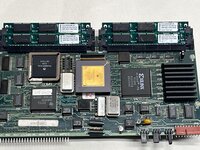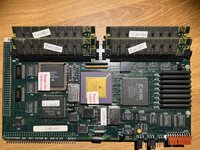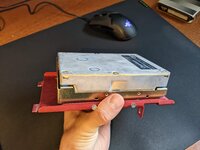ObeyDaleks
Well-known member
Hi. I've been experimenting with my Mac SE accelerators, and apparently you can upgrade at least some of them. I haven't tried any others, but I was able to bump the speed on my Novy ImagePro by replacing the processor, FPU, and the crystal oscillator (from 25Mhz to 33Mhz). This was easy/cheap since I already had a spare CPU/FPU combo, so I only had to source the oscillator. The Novy card allows you to simply pull out the oscillator and replace with another.
Now I want to try and upgrade to 50Mhz. I'm assuming this will work because the ImagePro actually had a 50Mhz variant. What I'm confused about is the FPU. The card has a PLCC FPU socket, but I believe 50Mhz 68882 only comes as PGA?? If that's true, what are my options? Would it be safe to overclock a 40Mhz FPU?
Another option I considered - there is another oscillator socket that's unpopulated. I believe this may be for a separate FPU clock, in case you want to run it at a different speed. So it might be possible to run the CPU at 50Mhz and FPU at 40Mhz. Is that feasible?
Any info would be appreciated. I guess I can experiment but I'd like to avoid breaking samething or ending up buying a bunch of stuff that's not going to work. Thanks.
I do plan to try and upgrade my MicroMac card as well, the same way. That one has a soldered oscillator so it's a bit more work. But I'm hopeful it will work.
Now I want to try and upgrade to 50Mhz. I'm assuming this will work because the ImagePro actually had a 50Mhz variant. What I'm confused about is the FPU. The card has a PLCC FPU socket, but I believe 50Mhz 68882 only comes as PGA?? If that's true, what are my options? Would it be safe to overclock a 40Mhz FPU?
Another option I considered - there is another oscillator socket that's unpopulated. I believe this may be for a separate FPU clock, in case you want to run it at a different speed. So it might be possible to run the CPU at 50Mhz and FPU at 40Mhz. Is that feasible?
Any info would be appreciated. I guess I can experiment but I'd like to avoid breaking samething or ending up buying a bunch of stuff that's not going to work. Thanks.
I do plan to try and upgrade my MicroMac card as well, the same way. That one has a soldered oscillator so it's a bit more work. But I'm hopeful it will work.
Last edited:



